Award Winner Built HobbyBoss 1/35 IDF Merkava Mk. IIID /MK. 3D LIC MBT +PE
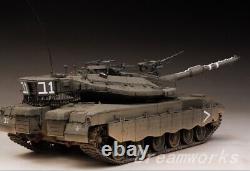
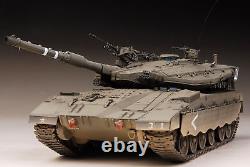

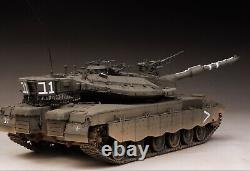
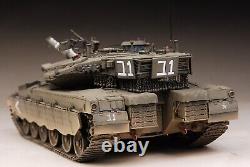
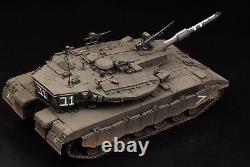
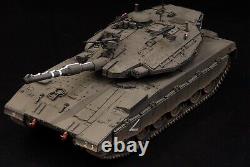
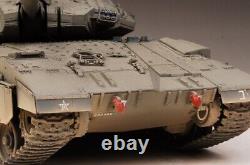
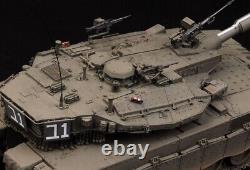
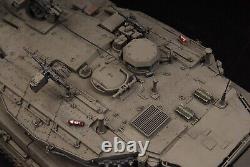
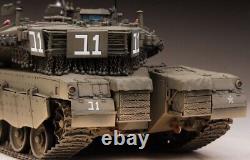
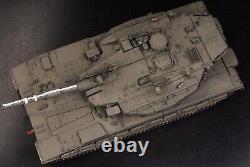
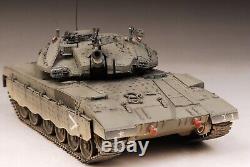
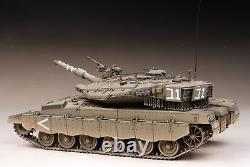
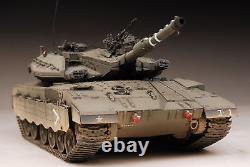


3D (LIC) IDF Main Battle Tank Israeli Ministry of Defense. Award winner built and painted Israeli Ministry of Defense Merkava MK. Ka'va "chariot" with realistic weathering finish. IDF Grey color scheme with accurate unit markings. Top building quality with outstanding details throughout whole model and very high standard accuracy on every individual part. Tracks with road wheel detail. Rotating turret and gun elevation with many turret equipment device details. Adding on vehicle tools and more add on details. Top building quality with sharp details overall. Add on boxes and more fancy accessories. The detailing is right up to excellent standards with top building quality. Captured the structures of the applique armor around the front and sides of "Dingle Balls" metal chain armor. Other etched brass includes the vehicle serial number plates as well as end plates for the hull stowage bins, the floor of the bustle basket and more. Driver`s hatch with details and open-able. Rotating turret and gun elevation. Main gun barrel is a multi-part and looks very good. Vision blocks, episcopes and the panoramic sight lens are provided on clear parts. Detailed commanders and loaders MG's are also nicely replicated. Open-able commander`s and loaders hatch with detail in and out. The smoke dischargers is nicely detailed.
The upper hull with plenty of fine detail including weld marks and more. The lower hull realistically reproduced features some nice details such as suspension, axles, rollers separate for good detail definition. Boat hull ventral armor plate covers motorization holes in lower hull. The rear hull storage racks are fair detail-wise Heavier side skirts with superb rivets details.
The road/idler wheels and drive sprockets have detail on both sides with great tooth ring details. The detail on the flexible tracks is very good. Towing cable, lights, antenna, on-vehicle tools and many exterior details. Metal chain, antenna, and more add-on accessories. Buffing and polishing to remove mold seam.
Base color with primer and putty for better surface detail. Airbrushed and painted with multicolor. Add clear paint for good finishing on decal applying. Washing to enhance the surface detail increase the appearance of depth including panels, doors, hatches, rivets, bolt head and more. Dry brushing to emphasize and highlight texture with edge for good wear, tear and fading.
Multi-color filters for blend color effects. Adding non-glossy paint for better finishing.Great detail paint job on rust and paint chips off with scratches, worn and bare metal realistic simulating, flow rust and rain streaks effects, grease with staining appearing, engine smoking and muffler burned representing. Also smear and dirt with dust and real mud and more on real-life weathering.
Final protective layer for long-term collection. The Merkava is a main battle tank used by the Israel Defense Forces. The tank began development in 1973 and entered active service in 1978. Four main versions of the tank have been deployed. It was first used extensively in the 1982 Lebanon War. The "Merkava" name was derived from the IDF`s initial development program name. It is designed for rapid repair of battle damage, survivability, cost-effectiveness and off-road performance. Following the model of contemporary self-propelled howitzers, the turret assembly is located nearer the rear than in most main battle tanks. This gives additional protection against a frontal attack.This arrangement also creates more space in the rear of the tank that allows increased storage capacity, as well as a rear entrance to the main crew compartment allowing easy access under enemy fire. This allows the tank to be used as a platform for medical disembarkation, a forward command and control station, and an armored personnel carrier.
The rear entrance`s clamshell-style doors provide overhead protection when off- and on-loading cargo and personnel.

